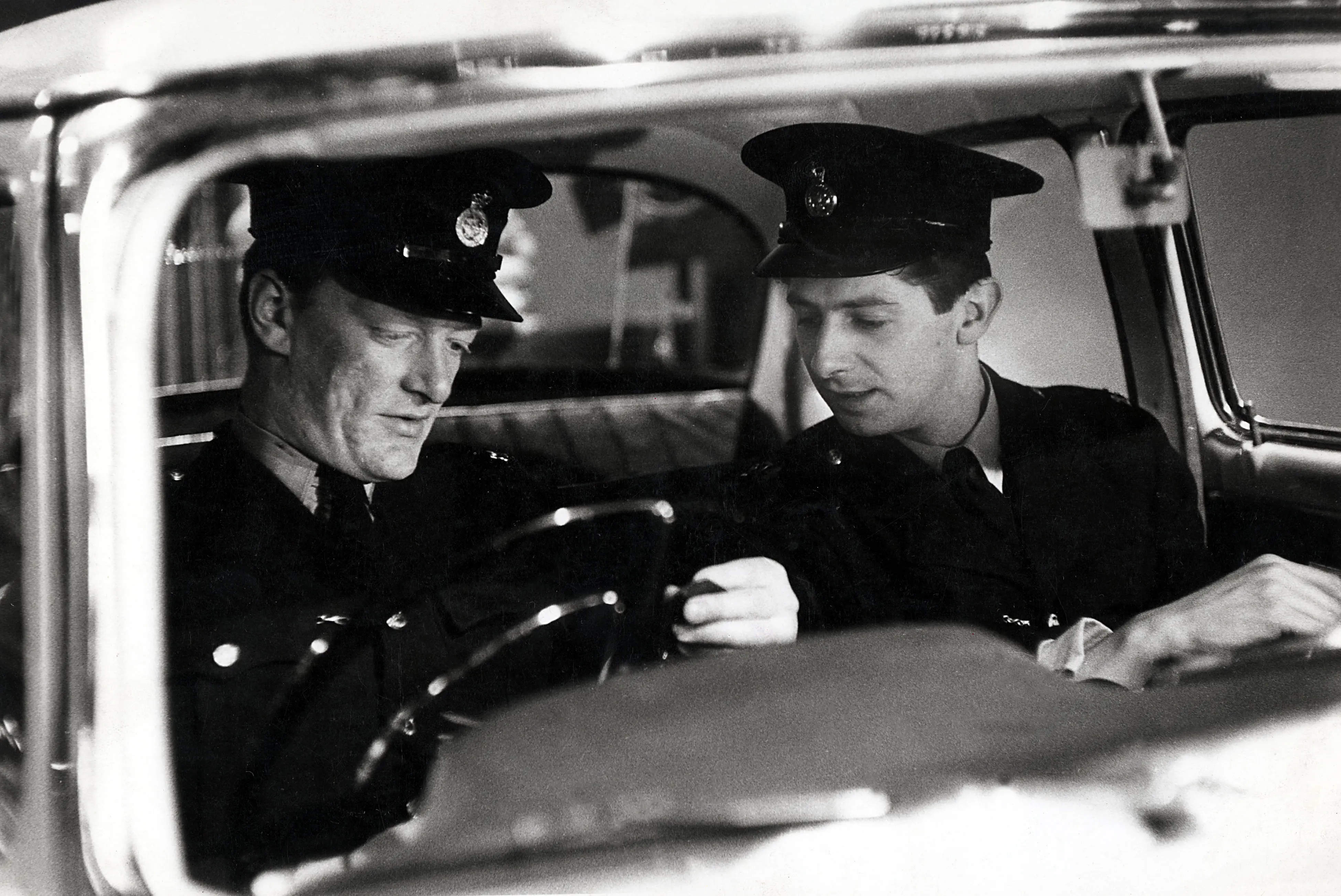Z CARS AT SIXTY
22 December 2021
Exactly 60 years ago, the BBC broadcast a new police drama series that would go on to capture the imagination of the viewing public. It featured some of the most recognisable vehicles in TV history as Andrew Roberts explains…
On the 2nd January 1962, the BBC premiered Z Cars, their latest crime series. However, unlike ITV’s No Hiding Place or the Scales of Justice and Edgar Wallace B films, this was not a realm where a senior officer arrived in his black Wolseley to resolve the drama. Instead, four young PCs patrolled the docks and the grim housing estates in their Ford Zephyr Mk. IIs, often faced with situations that caused them to doubt their abilities.

Z Cars was partially inspired by the memoirs of ex Detective Sergeant Bill Prendergast of the Liverpool City Police and by the scriptwriter Troy Kennedy Martin. When convalescing from a bout of mumps, he would occasionally tune in to the police radio channel where he found the officers sometimes “came across incidents where it was obvious that the police were not coping. They seemed confused, lost, apparently young and inexperienced”.
Kennedy Martin took his idea to Elwyn Jones of the BBC Drama Department, and the new series would use the ‘Crime Cars’ used by Lancashire Constabulary as its template. In 1959 their Chief Constable Colonel Sir Eric St Johnston supplanted constables on the beat with rapid-response saloons crewed by two PCs. These unmarked Zephyrs were known as ‘Crime Cars’ or ‘Z Cars’…
The setting for the drama was ‘Newtown’, a fictionalised version of Kirkby, and the force loaned the BBC two Fords as ‘Z Victor One’ and ‘Z Victor Two’:
Their crews were Bert Lynch, played by James Ellis, Jeremy Kemp as Bob Steele, Joseph Brady as ‘Jock’ Weir, while Brian Blessed, the only surviving actor of the quartet, portrayed ‘Fancy’ Smith. The series was broadcast live, and the writer Peter Lewis of the production team noted:
Only the scenes showing open streets are filmed. The Z car, suitably soiled, stands on wooden rollers for easy manoeuvring in front of back projection screens that produce the 60 m.p.h. illusions. The studio is littered with 14 or 15 different sets each week. Five cameras travel the floor ceaselessly. There are something like 250 changes of shot in each episode - an average of five a minute. The actor’s worst problem is to remember which scene he is in.
The Police Federation was unhappy with the new series; their chairman complained, “This isn`t the kind of picture of the Force that will get us the recruits we need” and “Officers were shown eating disgustingly”. After Colonel Todd saw a preview, he approached the BBC and the Home Office to cancel it. The Corporation declined, and Z Cars proved so popular that they extended its initial 13-week run to 31 episodes. Lancashire withdrew its support, and Dagenham subsequently provided the patrol cars https://www.youtube.com/watch?v=pByzir-wf8o
The Mk. IIIs were finished in Daffodil Yellow, which appeared a gleaming white when recorded on black and white videotape. Blessed did not have a licence before Z Cars, and he later recalled, “before I started to take lessons, someone at the BBC leaked to the press that I couldn’t drive”. He noted of his squad car, “As wonderful as the Ford Zephyr looked on TV, it was absolutely awful in the snow”. For the action scenes, “we’d have a camera on the bonnet and a backdrop at the reverse of the car, which would show some country lane or wherever it was we were supposed to be driving”.
The original run ended in 1965, but the BBC revived Z Cars two years later in a soap opera format that lasted until 1978. Of the first five seasons, there is any number of fine guest vehicles; a CID Hillman Minx rammed by a hijacked Zephyr, the MGA Traffic Car of Friday Night and a Mersey Tunnel Police Land Rover in People’s Property.
Such stories also featured roles for Arthur Lowe, Joss Ackland and Leonard Rossiter as Detective Inspector Bamber. Made for Each Other guest stars Judi Dench, John Thaw appears as a young DC in Hide and Go See and the pilot episode Four of a Kind has a cameo from a pre Monkeys Davy Jones. Michael Caine was offered the chance to play Steele, but he spurned the role, fearing typecasting.
And if one story encapsulates why Z Cars was so important a programme, it is Friday Night. PC Steele attends an RTA where a drunk driver has collided with a young motorcyclist. The sight of Kemp desperately asking the dispatcher about the delayed ambulance as a teenager dies in his arms remains powerful after six decades. The Colonel objected to what the viewing public responded to; the police as real human beings.
